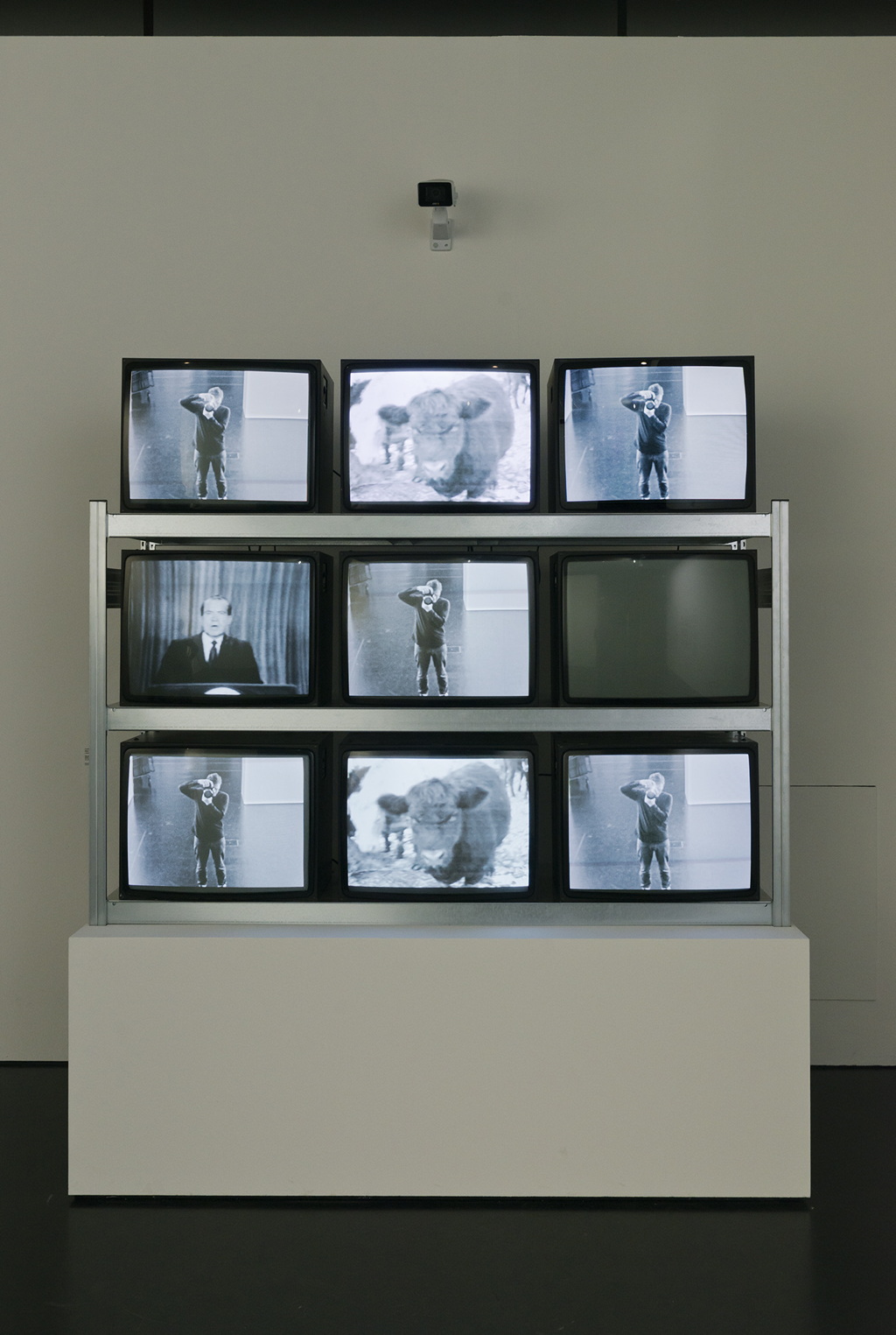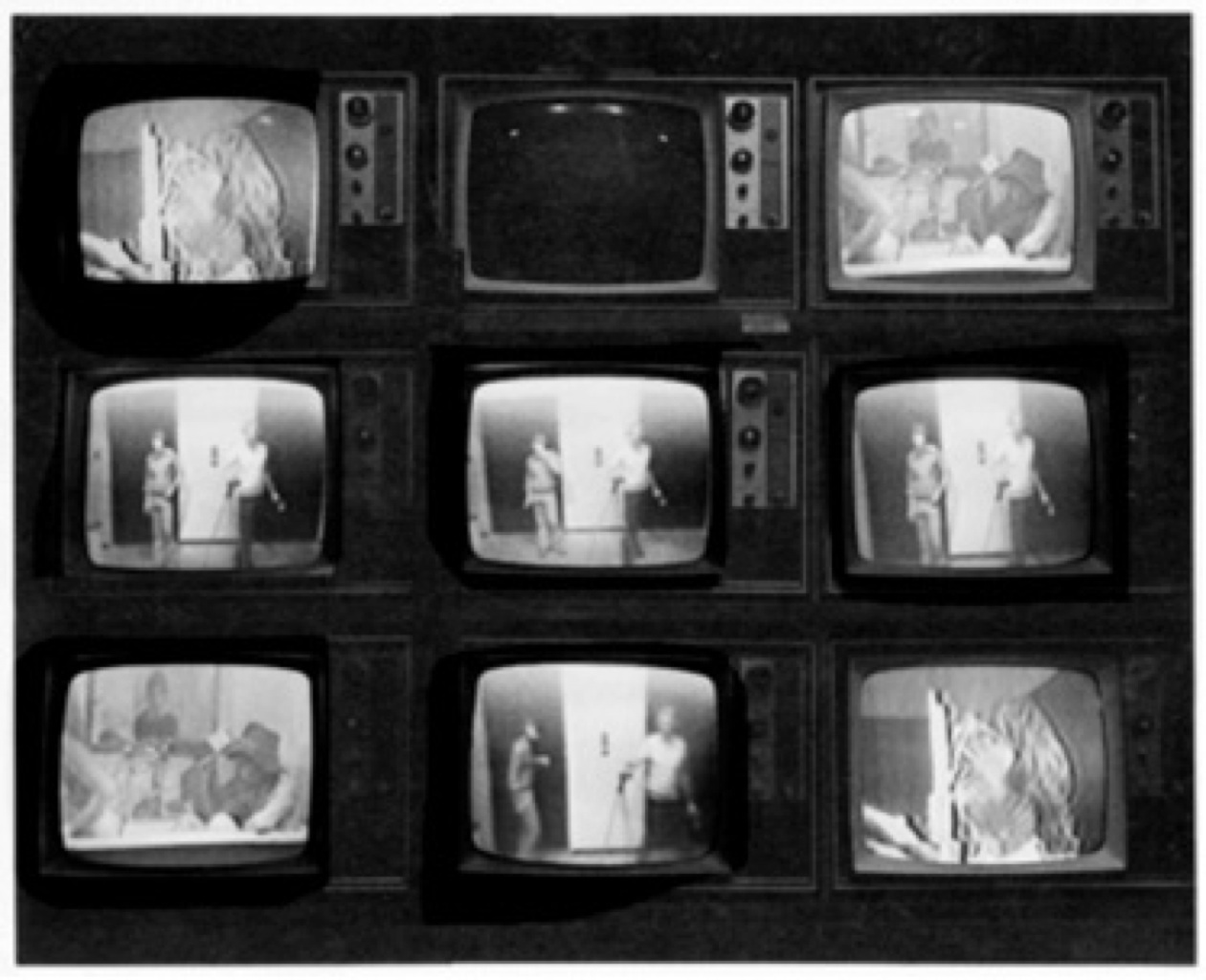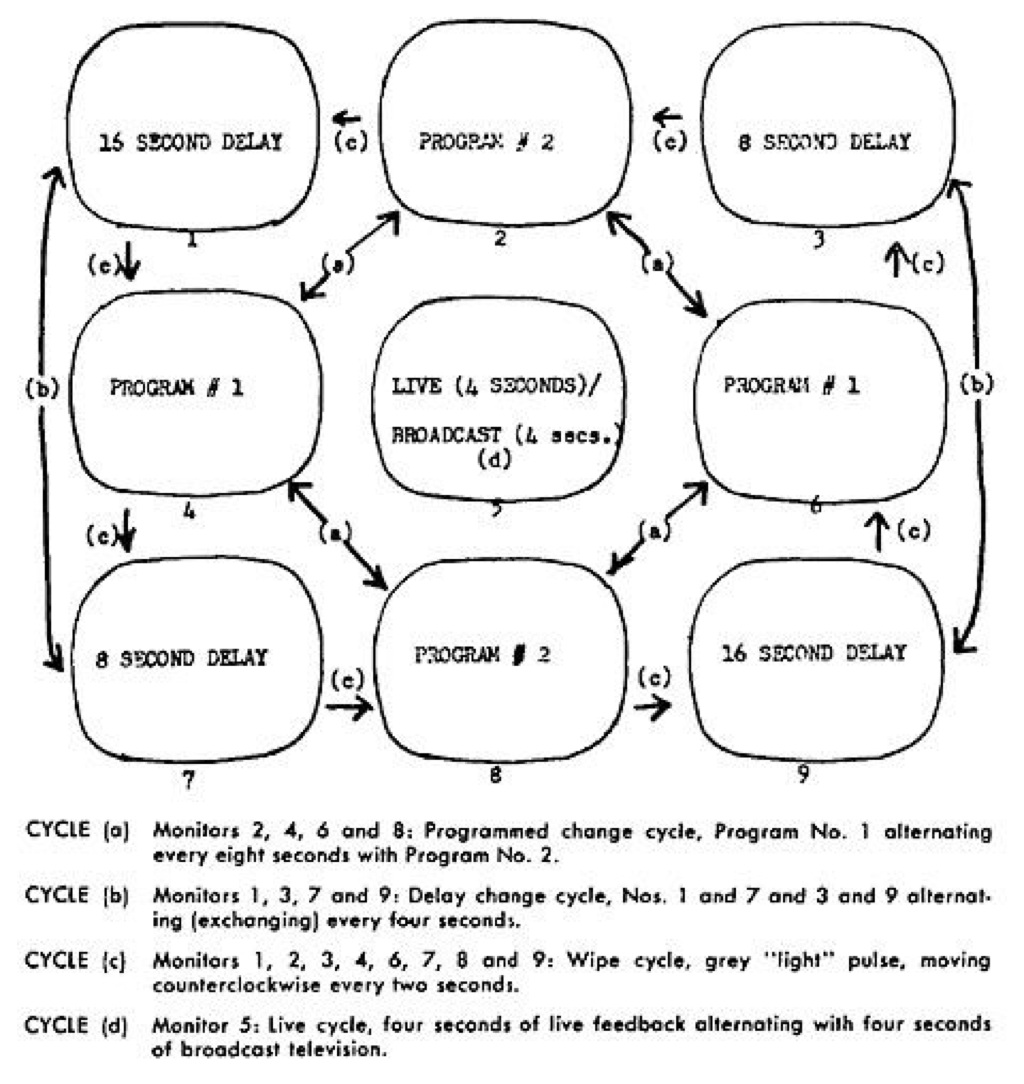Frank Gillette, Ira Schneider
Wipe Cycle
1969
- Artist / Artist group
- Frank Gillette, Ira Schneider
- Title
- Wipe Cycle
- Year
- 1969
- Category
- Installation
- Video
- Format
- Video Installation
- Material / Technique
- 6-channel video installation (digital reconstruction); 9 tube monitors, 1 camera, 2 digitized analog videos ( b/w, without sound, 00:14:00) ; computer: 6 Raspberry Pi 3B+, operating system: Raspian, custom software, programming language: C / GStreamer, custom-made video switch board; 1 digital sound recording, 1 media player, loud speakers
- Dimensions / Duration
- ca. 240 x 210 x 75 cm
- Contributors
- Programmierung/Hardware
- wissenschaftliche Beratung
- Collection
- ZKM | Center for Art and Media
- Description
- Frank Gillette and Ira Schneider developed the video installation »Wipe Cycle« for the exhibition »TV as a Creative Medium«, which opened in May 1969 in the Howard Wise Gallery in New York. It was one of the first exhibitions worldwide to show TV and video art. When the elevator doors to the Howard Wise Gallery loft opened, visitors stood directly in front of a block of nine monitors, above which a camera was mounted. On the screens they encountered a bewildering variety of video images: they saw themselves (in real time and with a time delay), a live television broadcast and two pre-recorded video films. They also could see a grey screen that moved counterclockwise across the monitors – the "wipe cycle". Probably there was also a soundtrack to this universe of images: audio signals in Morse code were played back from tape. Seeing oneself on the screen was an amazing experience in the late 1960s. Because until then, the major television stations determined what could be seen on television monitors. Only they had access to video technology. That changed in 1965 with the introduction of affordable video recorders for private use. Then, in 1967, when a battery-powered, portable video recorder with a camera came onto the market – the Sony Portapak – anyone and everyone could produce moving, electronic images. The installation »Wipe Cycle« is a key work in the history of video art. It was one of the first publicly exhibited "closed circuit" installations. In other words, it was one of the first works in which the audience could see itself in real time. The installation confronted viewers with the changes in living conditions in the 20th century: with an environment that has increasingly been determined by electronic media since the introduction of television. They saw themselves between live and pre-recorded images, between images of the earth taken from space, news broadcasts and grazing cows. The artist Frank Gillette noted: "t's an attempt to reshuffle one’s temporal experience—one’s sense of time and spacee" and added: "It was an attempt to demonstrate that you’re as much a piece of information as tomorrow morning's headlines." [1] On the occasion of the exhibition »Radical Software. The Raindance Foundation, Media Ecology and Video Art« in 2017, »Wipe Cycle« was reconstructed by Daniel Heiss in collaboration with Ira Schneider and Frank Gillette. [1] See Jud Yalkut, »Frank Gillette and Ira Schneider. Parts I and II of an interview«, in: »Radical Software«, Vol. 1, Nr. 1, 1970, S. 9–10, 10.
Author
Margit
Rosen




